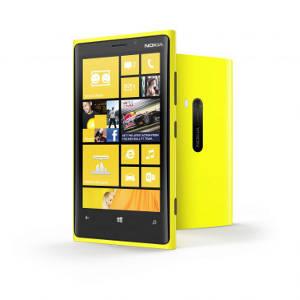
For those not familiar with Windows Phone 8 (WP8), it’s Microsoft’s newest mobile OS to compete with iOS and Android. Microsoft did a fantastic job creating a visually stunning operating system for phones with a clean and quick interface. I would say WP8 blends the simplicity and cohesive beauty of iOS with real-time data displayed in its customizable live tiles.
I want to dive into the key details of my switch, so to learn more about WP8, check out Microsoft’s Windows Phone site!
First, let me say I was all over the place with deciding on a color for my Lumia 920. I was definitely not going to get another black phone with these new color options that Nokia and AT&T were offering at launch (yellow, red, white, cyan and black).
I went into my local AT&T store on launch day and played with the red, black and white phones on display. I ended up leaving with the black matte version... I know, I was set on not getting a black, but the black had a matte finish, where the red and white have a glossy finish. I felt the glossy finish made the phone look cheap and wasn’t as professional.
Screen size: The Lumia has a vivid 4.5" screen, a respectable size when coming form a 3.5" iPhone display. The screen produced vibrant colors that were bright with deep blacks and easier to view in sunlight, compared to the Samsung Galaxy S3. One of the reasons I didn't go with the Samsung Galaxy S3 is because of its dull/dim screen at the highest setting. The S3 uses a different display technology, pentile matrix, which doesn't produce as crisp of an image for my taste. Another phone I crossed shop with is the HTC One X, which had the best screen according to other reviewers. However, I stayed away from the One X due to its widely disappointing reported battery life. The 4.5" screen on the Lumia - the smallest of the 3 phones - I felt was comparable to the One X's quality. The Lumia also sports an ultra-sensitive touch screen that works with gloves on!
Size/weight: I have smaller hands and really thought its bulky polycarbonate construction was going to be an issue. Many reviews complained about its heft since it's almost two times the weight of the iPhone. It’s possible the bulk is because of its built in induction coil for wireless charging (at least Nokia is innovating here). When I picked the device up in my hand, I noticed it was larger and heavier, but not enough to deter me from carrying one. One day I wore my more "form fitting" jeans (before the holidays, thankfully) and the phone really didn't feel any more bulky/heavy than my iPhone in its case.
Battery: Living in an LTE area and unplugging the device at 8:01am one morning, I was left with 44% of a charge at 6:10pm. I am impressed compared to my iPhone, especially since this phone is using an LTE radio and has a larger screen. My battery test included one 5 minute phone call, internet browsing over LTE for about an hour (wifi for about a half hour), downloading a couple apps, using Facebook, Twitter and various news apps throughout the day. Also, I constantly played with the phone - tweaking settings, so there was plenty of on-screen time with the brightness level set to medium. Anyone buying a smartphone today should be careful with how many email accounts and auto-update apps are running on the phone because it can be a major battery hog. I was careful to how I configured apps and live tiles, setting most to update at the least frequent intervals.
Overall, I really enjoy the Lumia since it’s a solidly built device. However, the Windows Phone ecosystem still needs to catch up with other platforms. Major applications found on the top 50 lists for Android and iOS are missing. I suggest checking the Windows Marketplace to ensure applications important to you are available before taking the plunge into WP8.
If you have any questions about a particular feature, please contact me!